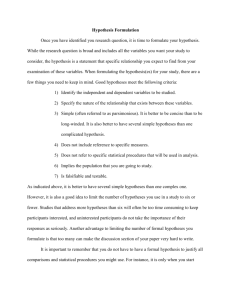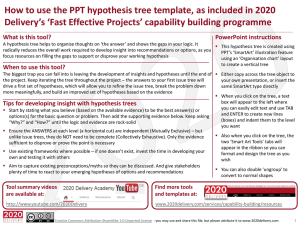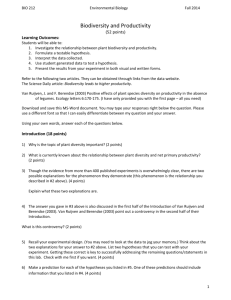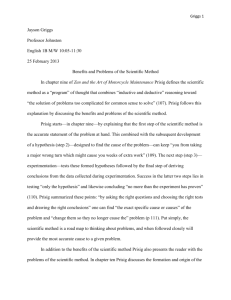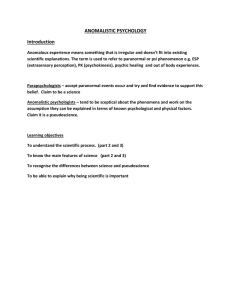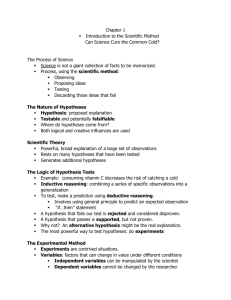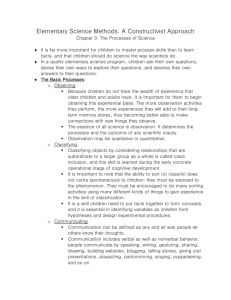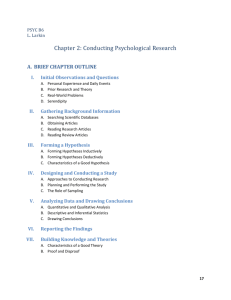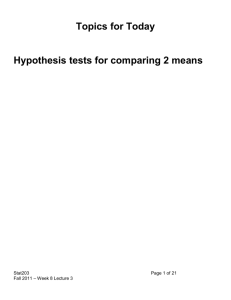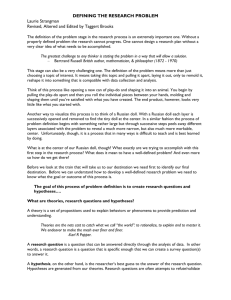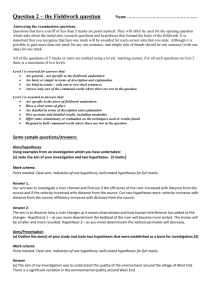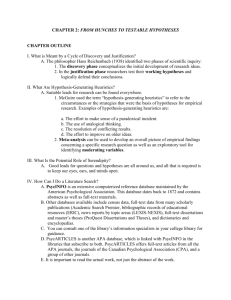How to Read a Scientific Paper.doc
advertisement
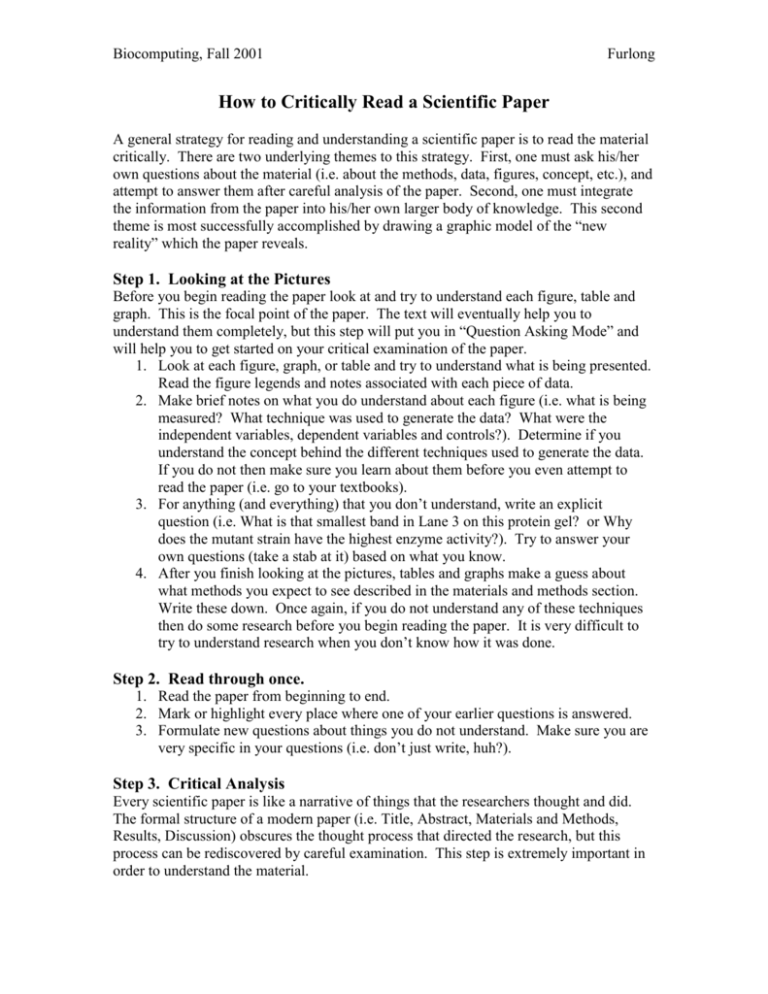
Biocomputing, Fall 2001 Furlong How to Critically Read a Scientific Paper A general strategy for reading and understanding a scientific paper is to read the material critically. There are two underlying themes to this strategy. First, one must ask his/her own questions about the material (i.e. about the methods, data, figures, concept, etc.), and attempt to answer them after careful analysis of the paper. Second, one must integrate the information from the paper into his/her own larger body of knowledge. This second theme is most successfully accomplished by drawing a graphic model of the “new reality” which the paper reveals. Step 1. Looking at the Pictures Before you begin reading the paper look at and try to understand each figure, table and graph. This is the focal point of the paper. The text will eventually help you to understand them completely, but this step will put you in “Question Asking Mode” and will help you to get started on your critical examination of the paper. 1. Look at each figure, graph, or table and try to understand what is being presented. Read the figure legends and notes associated with each piece of data. 2. Make brief notes on what you do understand about each figure (i.e. what is being measured? What technique was used to generate the data? What were the independent variables, dependent variables and controls?). Determine if you understand the concept behind the different techniques used to generate the data. If you do not then make sure you learn about them before you even attempt to read the paper (i.e. go to your textbooks). 3. For anything (and everything) that you don’t understand, write an explicit question (i.e. What is that smallest band in Lane 3 on this protein gel? or Why does the mutant strain have the highest enzyme activity?). Try to answer your own questions (take a stab at it) based on what you know. 4. After you finish looking at the pictures, tables and graphs make a guess about what methods you expect to see described in the materials and methods section. Write these down. Once again, if you do not understand any of these techniques then do some research before you begin reading the paper. It is very difficult to try to understand research when you don’t know how it was done. Step 2. Read through once. 1. Read the paper from beginning to end. 2. Mark or highlight every place where one of your earlier questions is answered. 3. Formulate new questions about things you do not understand. Make sure you are very specific in your questions (i.e. don’t just write, huh?). Step 3. Critical Analysis Every scientific paper is like a narrative of things that the researchers thought and did. The formal structure of a modern paper (i.e. Title, Abstract, Materials and Methods, Results, Discussion) obscures the thought process that directed the research, but this process can be rediscovered by careful examination. This step is extremely important in order to understand the material. Biocomputing, Fall 2001 Furlong Steps in the critical analysis: 1. Significant prior knowledge/current ignorance. What specific information (from earlier work) formed the basis for the experiments reported in the paper. You can usually find this information in the introduction. In your own words state what is known about the research and what is still unknown. 2. The Main Hypothesis and Alternatives. All research is directed by a hypothesis and one or more alternative hypotheses. In your own words, state all of the hypotheses directing the research. 3. Assumptions (Explicit and Implicit). Often the authors will tell you that they assumed something would (or would not) affect their experimental results. This is an explicit assumption. Authors also imply some assumptions (implicit assumptions). These are rather subtle. An example might be that they assume Ohm’s Law was working when they ran the electrophoresis, or that there are no plasmids in a strain if plasmid DNA cannot be isolated from the strain. Identify all of the assumptions (implicit and explicit) made and state why you agree or disagree with them. Note: Hypotheses are things that are tested in the research and assumptions are things that are not tested. Learn to distinguish between them. 4. Elements of Support or non-support. Questions are answered and hypotheses are either supported or not supported using experimental procedures (i.e. by the data). Look at the data again and re-read the materials and methods section and the results section. Were the methods appropriate? Did they offer evidence to support the hypothesis? Was the data interpreted correctly? For example, was the gel band seen in lane 1 really brighter than the control or would you interpret something differently. It is important to not assume that just because a paper was published that it is the gospel truth. Remember that you are training to be a scientist; therefore, you need to be convinced that the data supports the hypothesis. 5. Change in Reality? Did the data support any of the hypotheses? Be able to explain why or why not. Was this work a significant contribution to science or just a small contribution? Can this research be applicable to some greater cause? How does this work change our understanding? Draw a graphical model showing what was considered correct before the work was done and draw a model showing what is now considered correct after the work was done. Examine how the two models differ (if at all). 6. The Next Step. When a hypothesis is supported there is always another question that arises. This is a natural occurrence in scientific research. State one or a few new questions that come to your mind. Predict what new set of experiments can be done to answer the new questions. Are there any new experiments can be done to give further support for the previous hypothesis?





